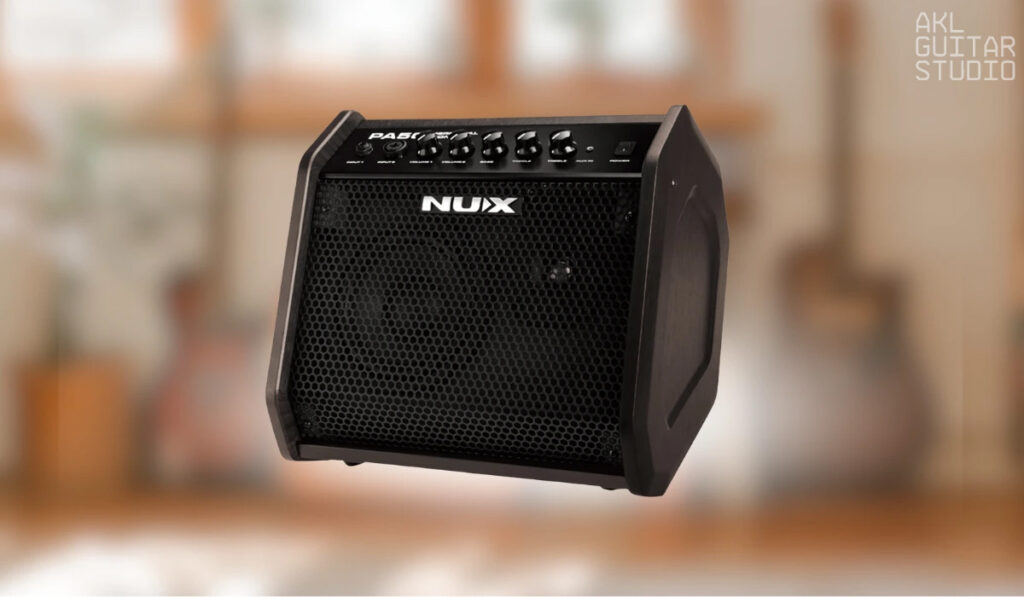
For many musicians, home is where most of the practice happens. Whether a child learning their first instrument or a guitarist perfecting a new riff, a reliable amplifier becomes an essential part of that journey. But not all amps are made with residential settings in mind. Sound levels, room size, and neighbours influence how suitable an amplifier is for home use.
At Auckland Guitar Studio, we help students and parents navigate the gear market daily. Choosing the right amplifier doesn’t need to be overwhelming—it just takes some guidance. With a focus on practical features and intelligent sound control, this article breaks down what you need to know before buying a home practice amp.
Why Choosing the Right Home Amplifier Matters
Practising music at home offers flexibility and convenience, but it also comes with challenges, especially when sound carries beyond your walls. High-wattage amplifiers, while great for performance, are rarely suitable for small spaces. An amplifier that’s too loud can strain family relationships and test your neighbours’ patience.
Choosing an amp built for residential use helps you stay mindful of volume levels without sacrificing sound quality. These amplifiers are designed to deliver clear, dynamic tones even at low volumes, assisting musicians to get the most out of every session without causing disruption.
Why is amplifier choice important for home practice?
Choosing the right amplifier ensures good sound at lower volumes, preserving household peace and neighbourhood harmony.
Understanding Different Types of Amplifiers for Home Use
There are several types of amplifiers on the market, each offering different features and sound responses. The most common types for home practice include combo amps, modelling amps, and purpose-built practice amps.
Combo amps are one of the best options for home use. They combine the amplifier and speaker in a single, compact unit, making them space-efficient and easy to move. Modelling amps digitally simulate different amp tones and effects, allowing players to explore a wide range of sounds without needing extra pedals. These are especially popular with beginners and intermediate musicians.
Practice amps, often lightweight and low in wattage, are designed for home environments. They provide essential features in a simple design—ideal for small rooms or bedroom sessions.
What type of amplifier is best for home use?
Combo amps are popular for home practice because they combine the amp and speaker into a compact unit.
Key Features to Look for in Residential Amplifiers
Not every amplifier suits a home setting, so looking for specific features that support residential use is important. One of the most essential is a headphone output. This allows silent practice, especially for late-night sessions or shared living spaces.
Low wattage is another key factor. Home players don’t need more than 10 to 20 watts of power. Models with built-in effects like reverb or chorus can enhance your practice without needing external gear. Auxiliary inputs are also helpful, as they let you plug in a phone or music player to play with backing tracks.
Sound quality should still be a priority. A reasonable home amp balances volume control with tone clarity, giving you a satisfying sound even at lower settings.
What features should a home amplifier have?
Essential features include a headphone jack, adjustable volume controls, and built-in effects to enhance silent practice.
Best Amplifier Wattage for Home Practice
Wattage plays a bigger role than many realise. Too much power can make an amp difficult to manage in smaller spaces, even with the reduced volume. An amplifier with 5 to 20 watts of output is more than enough for home use.
These models offer enough headroom to allow tonal control but stay within a reasonable volume range. Even a 5-watt tube amp can provide a rich sound for electric guitar players when paired with the right speaker. The key is balancing tone with household suitability—volume should serve the practice session, not overwhelm it.
How many watts is suitable for a home amplifier?
A 5 to 20-watt amplifier usually provides enough sound for home use without being too loud.
Advantages of Using Low-Volume Amps at Home
Low-volume amps are designed with practice in mind. Their circuits are built to produce a consistent tone at lower outputs, something that high-powered amps can struggle with. This means you can enjoy full-bodied sound without needing high volume.
Using a low-volume amp reduces the need to compromise between quality and quiet. They also often feature smart tech like built-in effects and headphone support, making them ideal for casual practice and skill development.
Why use a low-volume amp for home practice?
Low-volume amps allow players to enjoy clear tone and dynamics without risking noise issues.
Recommended Amplifier Models for Home Practice
Choosing the right model depends on your instrument and your budget, but a few amplifiers stand out for their value and practicality. The Yamaha THR10II is a compact, desktop-style amp that delivers impressive tone in a small package. It offers multiple amp settings and Bluetooth connectivity, making it a favourite among home players.
The Fender Mustang LT25 provides a wide range of amp models and effects in a very beginner-friendly design. It’s ideal for both children and adults starting out. For portability, the Boss Katana Mini offers great sound in a lightweight format and works on batteries, which adds extra convenience.
These models have built their reputation around home practice—quiet, effective, and enjoyable to play.
Which amplifier models are best for home use?
Models like Yamaha THR10II, Fender Mustang LT25, and Boss Katana Mini are ideal for home practice.
Using Headphones with Amplifiers for Silent Practice
Headphone compatibility is a must for any home practice amp. Whether you live in a flat, share a space with others, or simply prefer not to disturb the household, being able to practise in silence is a major advantage.
Modern practice amps often come with a dedicated headphone jack that replicates the amp’s speaker tone, giving you a realistic playing experience even when you’re the only one hearing it. Some even include cabinet emulation to create a more lifelike sound in headphones.
Can I plug headphones into my amplifier?
Yes, many modern practice amplifiers include a headphone output for silent and private sessions.
Maintaining Your Amplifier at Home
To keep your amp in top condition, a few simple steps go a long way. Store the unit in a dry, stable environment away from moisture and extreme temperatures. Avoid cranking the volume to full capacity, as this can damage internal components over time.
Clean the controls and exterior with a soft cloth, and occasionally check the input and output jacks for dust or build-up. If your amp uses valves (common in tube models), be mindful of wear and plan for replacements every couple of years with regular use.
How do I take care of my amplifier?
Keep the amplifier in a dry area, avoid overdriving the volume, and regularly clean the controls and casing.
Mistakes to Avoid When Buying a Home Amplifier
It’s easy to get excited and buy more amp than you need. One of the most common mistakes is choosing an amplifier with too much wattage. These amps are built for live performance and can be unmanageable in small rooms.
Another issue is ignoring essential features like volume control or headphone support. Some budget models may cut corners in these areas, making them less suitable for quiet environments. Lastly, avoid amps that are too complex for beginners, especially if buying for a child. Simplicity often leads to better practice habits.
What should I avoid when choosing a home amplifier?
Avoid choosing high-wattage stage amps or models without volume control, as they can be too powerful for home use.
When to Upgrade Your Home Amplifier
As your skills develop, your gear should evolve too. If your current amp no longer meets your needs—whether it lacks tonal flexibility, features like USB output, or simply isn’t holding up—then it may be time to upgrade.
Signs of wear, inconsistent sound quality, or limited options for tone shaping are all indicators that a new amplifier could improve your experience. Auckland Guitar Studio can help guide you through this process with personalised recommendations based on your playing style and space.
When should I upgrade my home practice amplifier?
Upgrade when your playing style evolves, your needs outgrow your amp’s features, or when sound quality declines.
Get Expert Amplifier Advice from Auckland Guitar Studio
Finding the right amplifier for home practice doesn’t need to be complicated. Whether shopping for your first amp, replacing an old one, or choosing a setup for your child, getting the right advice makes all the difference. Auckland Guitar Studio has guided musicians of all ages for years, helping them match the right equipment to their musical goals.
Looking for the perfect home amplifier?
Contact Auckland Guitar Studio for expert guidance and amplifier recommendations tailored to your needs. We’re here to help you sound your best—quietly, confidently, and comfortably.
